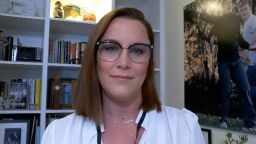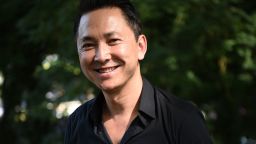Young adult authors of color are fed up with being targeted.
They’re sick of seeing their books bogusly labeled “critical race theory” or “anti-police.” They’re incredulous at claims their words make kids uncomfortable. They’re done seeing their books challenged or banned over what they see as insincere claims about vulgarity, violence or sex. They’re exasperated with feeling singled out.
Groups that monitor censorship, including the ACLU, PEN America, American Library Association and the National Coalition Against Censorship, say it’s more than a feeling. Since the killing of George Floyd, a Black father, by a White police officer, experts see Black and brown authors increasingly becoming the quarry of would-be censors, they say.
“The frank and difficult stories of being Black in America” are coming under fire, said NCAC spokesperson Nora Pelizzari.
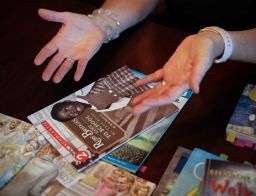
“It’s pure censorship of ideas and viewpoints, which I would argue should not survive constitutional scrutiny, but we’re living in odd times these days,” added Deborah Caldwell-Stone, a former lawyer who now directs the ALA’s office of intellectual freedom.
While the ALA says half of the 10 most challenged books of 2021 were targeted for LGBTQ content – another worrying phenomenon that intellectual freedom fighters say isn’t to be downplayed – the organization also saw a record number of challenges, many of them aimed at authors of color exploring history, racism or their own experiences in America.
In April, civil rights activist Ruby Bridges – whose children’s book about integrating a New Orleans school has been targeted – told a US House subcommittee investigating book bans, “Our babies – all of them – need to see themselves in our books, particularly in school. Representation doesn’t just matter; it’s vital, especially in the pages of the books that we teach from.”
“Out of Darkness” was one of 2021’s most-challenged books, according to the ALA. Its author, Ashley Hope Pérez – a White mother of two Mexican American children who has deep ties to Latino communities – issued a pointed YouTube retort after a Texas mom tried to convince a school board her book was about anal sex. Pérez, 38, suspects the real issue was the interracial love story she weaved through her historical fiction novel about a school explosion in 1930s Texas, she said.
“Somehow when it’s in a book that centers Black or brown or nondominant experiences, it’s problematic, but it’s fine in the Bible or it’s fine in Shakespeare. It’s super incoherent,” she said. “It’s really about targeting groups that have only recently been able to get their stories told, rolling back that progress.”
Authors of color say they’re writing books they wish they’d had growing up. Watching online clips of parents yelling about their work at school board meetings, they often don’t recognize the literature being described. This is what their stories are really about:
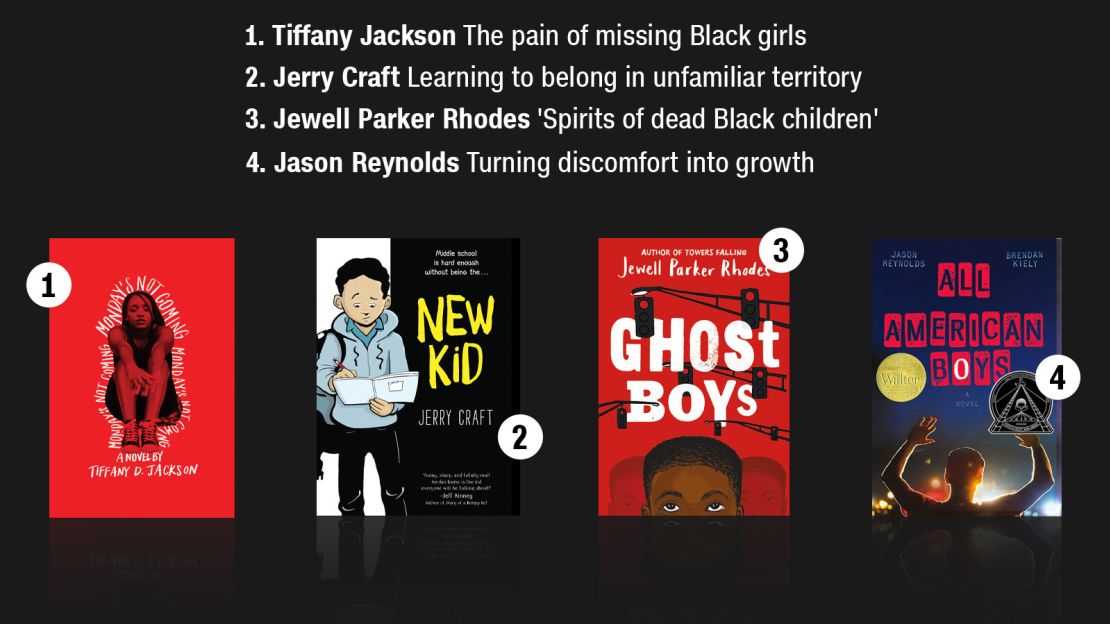
The pain of missing Black girls
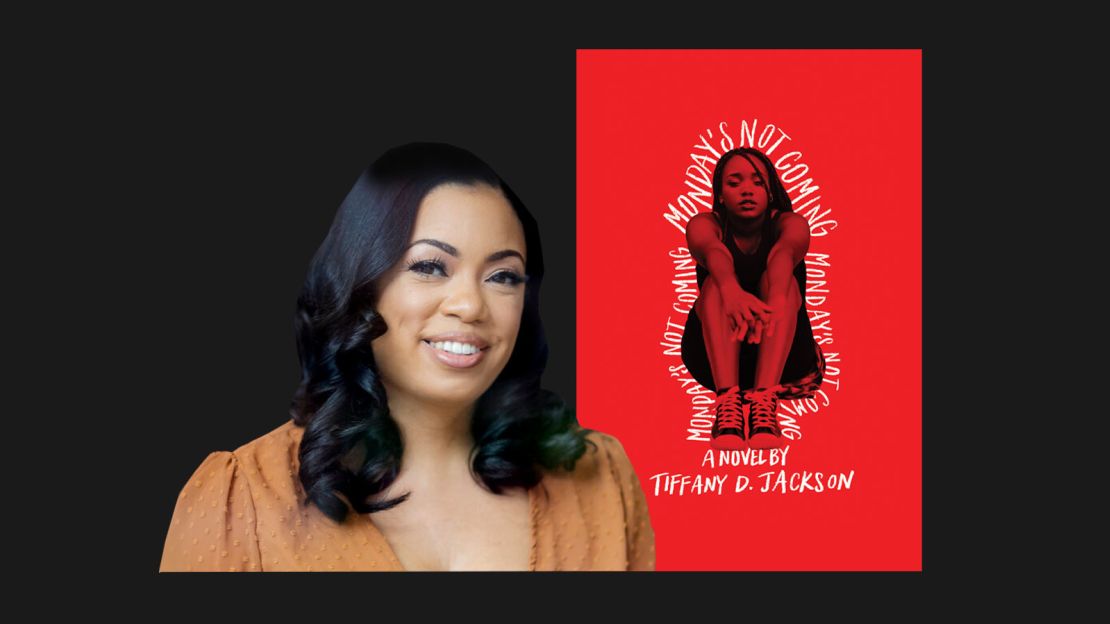
Tiffany Jackson once told young readers her acclaimed “Monday’s Not Coming” was under fire for sexual content. They gave her the screwface, like, “What book are they reading?” she recalled.
The 39-year-old author didn’t understand, either. She had to reread it. When she heard other parents claiming the book espoused critical race theory, she believed she’d figured out what was up.
“I’m realizing it’s not about the book at all,” Jackson said. “It’s about the children the book is highlighting and the color of their skin.”
When Jackson was in third grade, her best friend, Tara, didn’t show up for the first day of class. The two were inseparable and had their own language. It was the ’90s, pre-cell phones, and Jackson couldn’t find answers. As lonely days passed, Jackson remembers doom setting in. “How am I supposed to survive without my person?” she wondered.
Claudia, the protagonist in “Monday’s Not Coming,” experiences a similar unmooring, but whereas Tara returned to class with an injured ankle, Monday … well, the title says it all. Jackson’s thriller chronicles Claudia’s quest to find out what happened.
Growing up in Brooklyn, Jackson said, girls went missing all the time. Neighbors talked about them, “but there were no ‘Dateline’ specials about Black girls that I grew up with who went missing.” Consider how the disappearance last year of Gabby Petito, 22, a White woman, commanded weeks of media coverage, while the nation’s 100,000 missing Black, brown and indigenous girls and women drew far fewer headlines.
Jackson wrote her book, in part, to highlight how these women “aren’t a national priority,” but for her, it doesn’t end there.
Speaking to youngsters, she asks: When was the last Amber Alert you saw for an African American girl? Where do you see missing Black kids in the media? Can Google tell you how many Black children are missing in your state?
As her point congeals in teens’ minds, Jackson explains how they can help and boost awareness. A teacher once told Jackson she’s now more vigilant when a child misses class, she said.
“It creates action, and that’s what we’re looking for,” Jackson said. “Teaching them to open their eyes and ears to a different experience and look at the world with a broader lens.”
An aspiring writer since age 4, Jackson revels in giving kids something she never had: stories in which they can see themselves – and not as some token character but as a primary love interest or a heroine unraveling a mystery.
“I never saw myself on a page, so I’m writing for a young Tiffany,” she said. “Watching my dream sort of be corrupted by ignorant parents Is really painful to watch.”
Learning to belong in unfamiliar territory
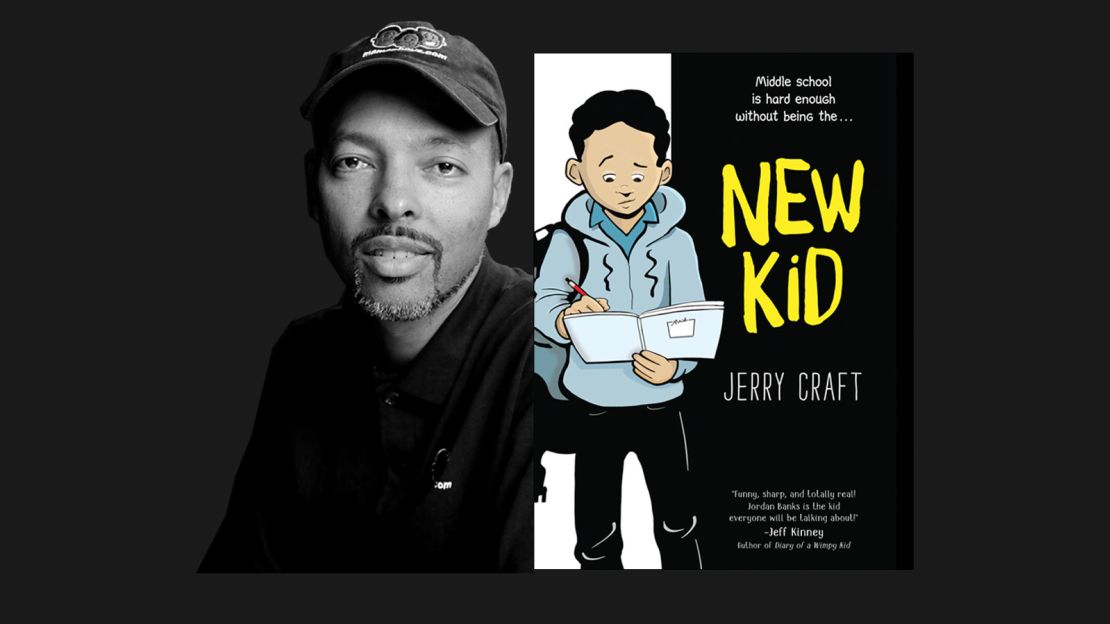
Growing up, Jerry Craft didn’t like reading. He couldn’t relate to the characters, with the exception of Pip from “Great Expectations” – but only because Pip was smart and people predicted big things.
A young Craft felt stories about Black people were “either history or misery.” They had to battle slavery or gangs or poverty. “Our escapism is literally escaping from somewhere,” he said.
There were no Black Vikings, Black wizards or Black kids walking through a wardrobe into Narnia, so Craft gravitated to comics. Even then, he was more drawn to Spider-Man than Peter Parker. He’d flip past the pages about the mild-mannered photographer to get to Spidey fighting Dr. Octopus.
By the time Craft got the chance to control the narrative – first as a cartoonist and now as an author-illustrator – he had long wondered, “Why can’t we have Harry Potter and the wonderful books that feature White protagonists?”
Like Jordan Banks in his graphic novels, “New Kid” and “Class Act,” Craft grew up in a brownstone in New York’s Washington Heights. He attended a largely White private school, loved to draw and had a supportive family and a group of friends who enjoyed skateboards and playing sports.
When a Texas mom had “New Kid” yanked – albeit temporarily – from her district’s libraries, labeling it Marxist and likening Craft’s description of microaggressions to teaching CRT, Craft was baffled. There’s no cursing in “New Kid,” no drug use, no violence, no sex. “No one’s even bathing,” Craft said. It’s a humorous, family-oriented story about belonging, he said.
If reading about microaggressions makes someone uncomfortable, imagine Craft’s discomfort as an African American kid in a room full of White students learning about slavery and Jim Crow, he said. Try to envision Craft’s unease later that day when White kids joked he had to sit at the back of the bus.
“The fact that you’re banning my book is the reason I’m writing these books,” he said. “If I didn’t grow up uncomfortable, I would never make these books in the first place because I wouldn’t have anything to base these stories on.”
“New Kid” was returned to the Texas library’s shelves after a formal review, and a local parent raised money to buy a couple hundred copies for students in the district. The book – which was adorned with some of literature’s highest honors, including the John Newbery Medal and the Kirkus Prize for Young Readers’ Literature – is now slated to serve a much wider audience, as Craft will executive produce a film adaption for LeBron James’ The SpringHill Company.
Craft’s triumph doubtless sends a message to the hundreds of parents who signed the petition to have his book banned, but Craft isn’t sure their outrage was ever authentic.
“It’s OK that these things I see happened to me as a kid – and happened to my kids; it’s just not OK for me to tell people that it happened and put it in book form?” the father of two asked. “The people who cry reverse racism, it’s one thing if they ever stood up when they saw actual racism.”
‘Spirits of dead Black children’
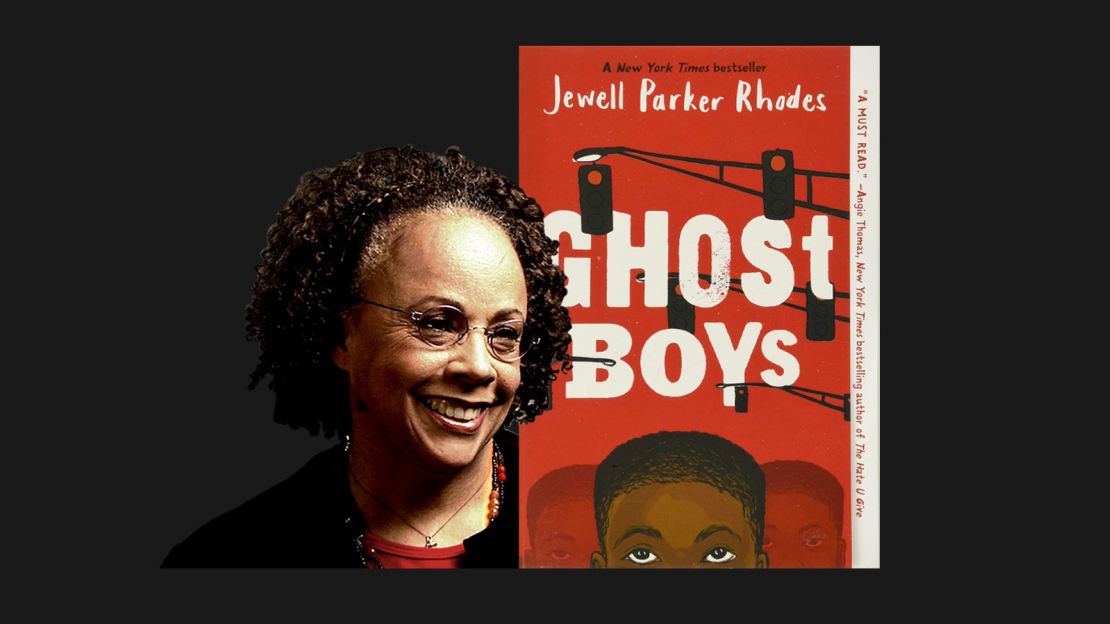
Jewell Parker Rhodes was a baby when Emmett Till was murdered in Mississippi, and the image of his maimed body has remained with her for almost all of her 68 years.
Six decades after Emmett was killed, a Cleveland policeman gunned down Tamir Rice while the boy held a toy gun, leaving Rhodes to ask, “Why is it that young Black kids are still being murdered?” She came to a conclusion reached by many: “The tradition in America is that we have denied the innocence of childhood to children of color.”
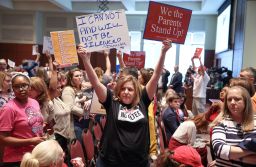
There’s a tendency to make African American boys older, bigger, more advanced, she said. Beyond 12-year-old Tamir and 14-year-old Emmett, she said, it also applies to Michael Brown, Trayvon Martin, Laquan McDonald and others.
“We have to say all the names because we also know there are a lot of names that nobody will ever know,” she said. “We shouldn’t have a community of spirits of dead Black children.”
Such is how Emmett and Tamir became inspirations for Rhodes’ award-winning “Ghost Boys,” about a policeman killing 12-year-old Jerome after mistaking his toy gun for a weapon. Jerome meets Emmett’s ghost, and the only living person who can see them is the daughter of the cop who killed Jerome.
When a Florida police union director denounced Rhodes’ book as anti-police propaganda, demanding it be removed from curricula, Rhodes felt as if her literary characters were being treated like real-life Black children, their innocence maligned as something nefarious. Meanwhile, she said, there has never been the same kind of hullabaloo over, say, Peter Pan – a mischievous and irresponsible misogynist.
“What society do you want where you don’t have kids grow up?” she asked, referring to Pan’s Neverland.
“Ghost Boys” doesn’t stigmatize police, she said. She humanizes the officer who killed Jerome, casting him as a product of American “stereotypes and biases and our history of demonizing people of color in order to justify slavery.”
“I knew this book would kill me,” she said, explaining it was tough to write because she has seen the discrimination her own son has faced, with school officials calling law enforcement over trivial infractions or police stopping and frisking him.
Banning her book deals an injustice to her and her son’s experiences. It also revictimizes boys like Emmett and Tamir, whom Rhodes describes as “tragic heroes in part of a tradition of bearing witness.” Parents demanding books be banned seem to have “lost that sense of reading nuances or being invested in a story emotionally, intellectually and spiritually,” she said.
“We nurture children so they can fly and be set free and be the citizens for a new world, a new generation,” Rhodes said. “Parents are dragging these children intellectually, emotionally back to their era, and I think, culturally, it’s really a disservice.”
Turning discomfort into growth
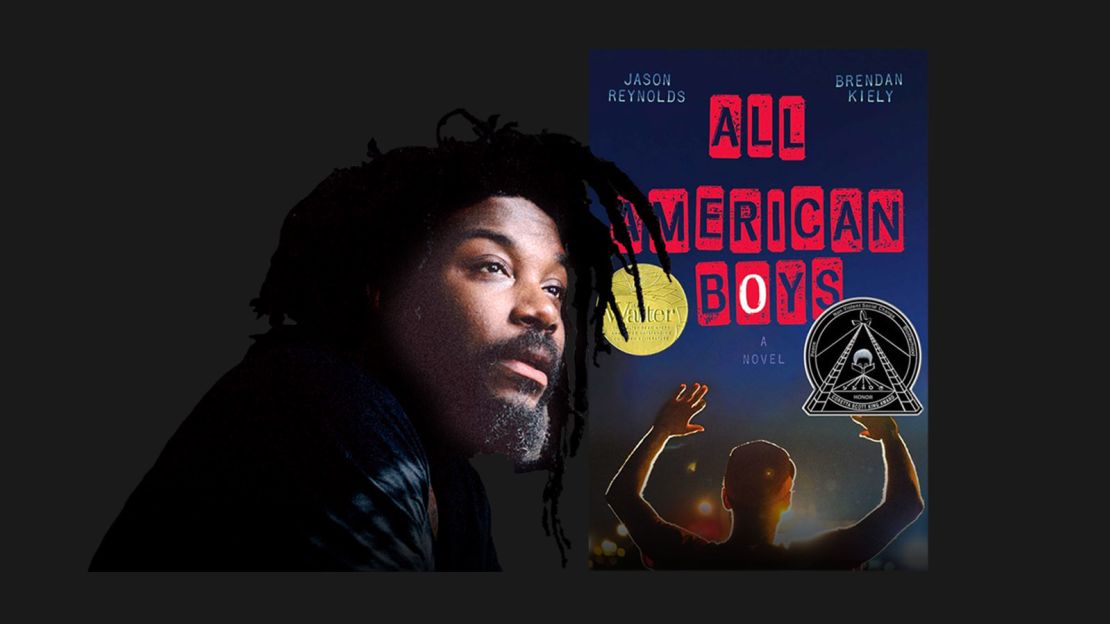
Jason Reynolds has no children, but as the Library of Congress’ national ambassador for young people’s literature, he serves countless kids. He’s never heard one demand his books be banned. Rather, he hears fears about community violence, trans friends’ safety, how mothers will pay rent.
Boys are learning about girls, White kids about Black kids, cis youngsters about LGBTQ classmates. They want to know how to have fruitful conversations that don’t cause harm. Is there discomfort? Sure, but not like parents and politicians who want to ban his books present it.
It’s more, “Hey, now that I know this, I feel uncomfortable – not because I am uncomfortable about what you’re saying but because I want to be better. How can I be better?” the 38-year-old bestselling author said.
Discomfort is an inextricable component of growth, and “if the adults are doing their jobs, discomfort doesn’t have to feel like danger,” Reynolds said. “We can manage the discomfort and not let it be something that becomes a wall or an anvil or a weight on a child, but instead becomes a springboard.”
Reynolds is a favorite target of the censors. Last year, two books Reynolds coauthored – including “All American Boys,” which he wrote with Brendan Kiely about a racially charged police beating – made the ALA’s most-challenged-books list. Reynolds resents the implication that he’s indoctrinating children when he’s merely relaying his own experiences. It’s “more fishbowl than soapbox,” he said.
“It’s me wrestling and reckoning with my childhood. It’s me dealing with some of the things that maybe I never dealt with. It’s me trying to figure out how to articulate some of the fears I felt as a kid or some of the joys,” he said. “I’m trying to find a way for me, for my life, to come into clearer view.”
Take “Stuntboy, in the Meantime,” which Reynolds dedicated, “For ten-year-old me.” It hasn’t been targeted by censors, but it provides an example of how his books would’ve helped him a youngster. Though Reynolds calls it “sort of silly and light-hearted,” he wrote from it a serious place.
At 10, Reynolds struggled with his parents’ divorce, crying at night and leveraging their split as an excuse for bad behavior. His family, like so many, couldn’t contextualize what was happening in a healthy way. A graphic novel like “Stuntboy” would’ve helped him and his mother navigate what was happening, he said.
“To see a kid dealing with anxieties and fears at that time – even though I didn’t have language to put to it – that would’ve been huge for me,” he said. “But those books didn’t exist.”
If parents say profanity or accounts of racism make their sons and daughters uncomfortable, Reynolds accepts that. He would never tell someone how to parent, he said, but he has questions: Are they showing up at school board meetings to defend indigenous kids forced to learn myths about Christopher Columbus? Are they so vigorously stamping out vulgarity in kids’ Instagram, YouTube and TikTok accounts?
“There’s no better place for a young person to engage and wrestle with ideas that may or may not be their own than a book. These stories are meant to be playgrounds for ideas, playgrounds for debate and discourse,” he said. “Books don’t brainwash. They represent ideas. You have a right to disagree with those ideas. Adults aren’t afraid of books. They’re afraid of the conversations young people bring home.”


